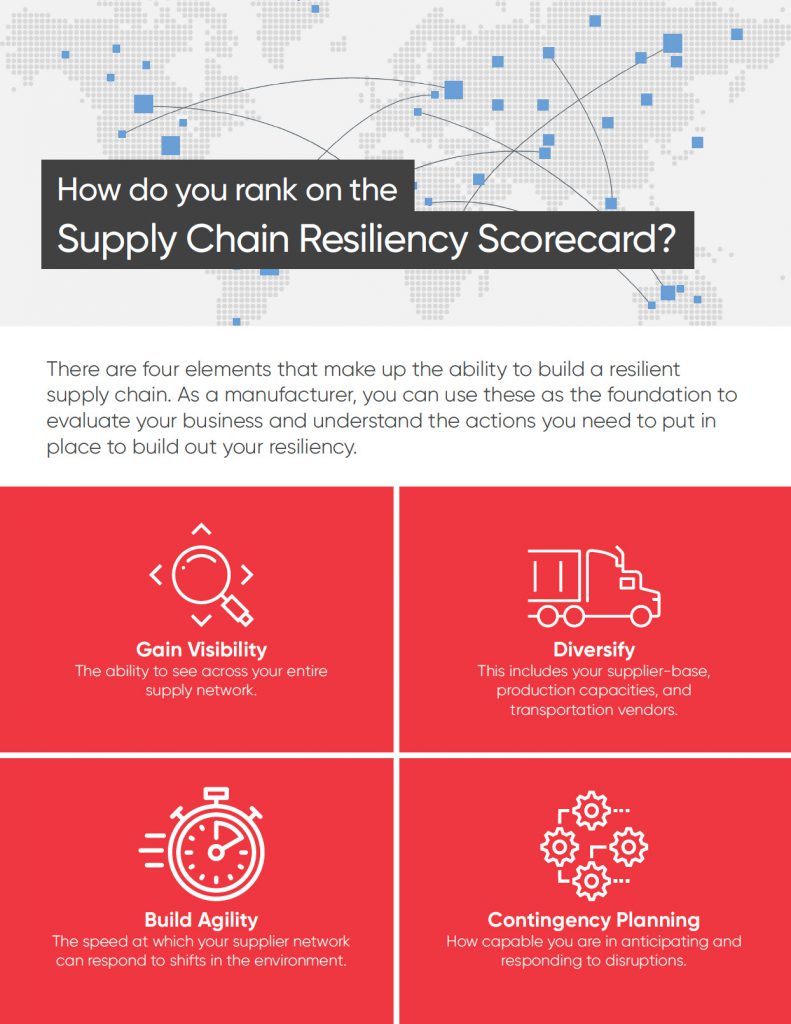In a recent whitepaper we spoke about the four features that make up a resilient supply chain and how to evaluate your business and understand the action items you need to put in place to build out your own resiliency.
Those four elements include:
- Visibility – The ability to see across your entire supply network.
- Agility – The speed at which your supplier network can respond to shifts in the environment, such as scaling production up/down, reconfiguring plants and logistics networks, and opening new sales channels.
- Diversification – This includes your supplier-base, production capacities, and transportation vendors.
- Contingency Planning – How capable you are in anticipating and responding to disruptions.
When evaluating your own supply chain and priorities, one recommendation is to start with creating a Supply Chain Scorecard by answering the following questions as they relate to these four factors.
Visibility
- How well do you today understand your vendor supply chain?
- How well do you understand your customers’ demand and supply chain?
- Are you using EDI (Electronic Data Interchange) to communicate between your vendors and suppliers?
- Are you getting real-time data from your vendors and customers?
Agility
- How quick are you to react and change once you determine that there is a problem within your supply chain?
- How well-prepared are you to respond to shifts including scaling production up and down with product demand?
- Are you able to pivot to new product lines in case of a sudden demand change?
- How quickly can your sales and marketing channels pivot, and can you open new channels if one is not effective (such as when salespeople can’t travel during a pandemic)?
- Are you able to reconfigure plants and logistics networks?
Diversification
- Do you have enough flexibility in production and backup vendors with geographic diversity? How about multiple shipping vendors to handle pricing and volume restrictions?
- Do you have access to data on which parcel companies can ship most quickly and cost-effectively?
- Are your raw material sources geographically diverse and can you pull from multiple locations?
- Can you move machines around and pivot in production?
- Is your transportation network flexible enough to handle labor shortages, and do you need additional transporters on call?
Contingency Planning
- Are you able to anticipate and respond to disruptions?
- Do you have a crisis team in place with assigned roles?
- Do you have contingency plans in place that can be executed by this team?
- Do you run periodic fire drills to prepare for supply chain disruptions?
Answering these questions is your first step to building out your own supply chain resiliency.
They can eventually lead to you being able to implement permanent changes that will make your business more resilient to supply chain disruptions, while making you more agile and capable of evolving to meet changing customer expectations.

